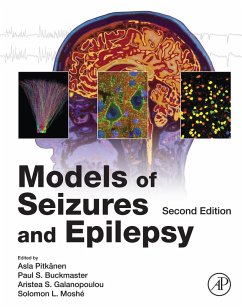
Epilepsy and Brain Tumors (eBook, ePUB)
Versandkostenfrei!
Sofort per Download lieferbar
104,95 €
inkl. MwSt.
Weitere Ausgaben:

PAYBACK Punkte
52 °P sammeln!
Patients with brain tumor-related epilepsy (BTRE) suffer from two serious pathologies simultaneously - a brain tumor and a secondary form of epilepsy. Although there has been remarkable progress in BTRE research in recent years, it remains an on-going challenge for clinicians and continues to stimulate much debate in the scientific community. This volume is the first to be completely dedicated to BTRE, and in doing so it explores issues faced by the health care team as well as some of the novel and promising directions that future research may take. Epilepsy and Brain Tumors is not only a comp...
Patients with brain tumor-related epilepsy (BTRE) suffer from two serious pathologies simultaneously - a brain tumor and a secondary form of epilepsy. Although there has been remarkable progress in BTRE research in recent years, it remains an on-going challenge for clinicians and continues to stimulate much debate in the scientific community. This volume is the first to be completely dedicated to BTRE, and in doing so it explores issues faced by the health care team as well as some of the novel and promising directions that future research may take. Epilepsy and Brain Tumors is not only a complete reference on BTRE but also a practical guide based on clinical experiences, with a comprehensive collection of presentations from international experts who share some of the latest discoveries and their approaches to tackling a wide range of difficult and complex issues. - Includes coverage of epidemiology, pathology and treatment of both primary and metastatic brain tumors - Offers additional insight into supportive care, incidence in children, focal epileptogenesis, clinical evaluation, antiepileptic drugs, surgical treatment, cognitive rehabilitation, and more - Chapters authored and edited by leaders in the field around the globe - the broadest, most expert coverage available
Dieser Download kann aus rechtlichen Gründen nur mit Rechnungsadresse in A, B, BG, CY, CZ, D, DK, EW, E, FIN, F, GR, HR, H, IRL, I, LT, L, LR, M, NL, PL, P, R, S, SLO, SK ausgeliefert werden.













